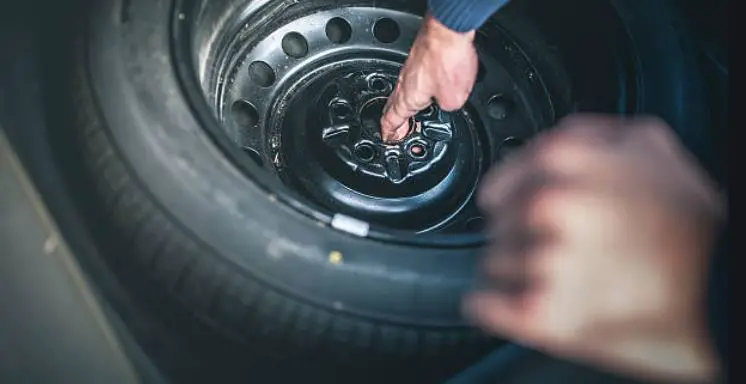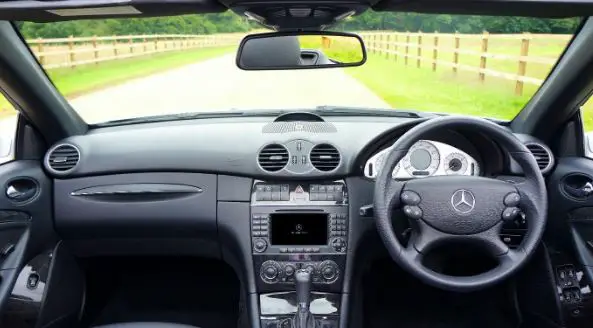Even though the spare tire is an increasingly rare sight on new vehicles — some OEMs simply don’t provide them like they used to — there are still plenty of existing vehicles with a spare tire either hanging on the back door in the case of many SUVs, or hidden in a compartment under the trunk.
If the time ever comes that you have to put that spare tire to use, you might be wondering just how long you can safely drive on it before getting a new set or at least a new one to complete your existing set. How long can you drive on a spare tire? This is the central question of today’s blog.
What is the Purpose of a Spare Tire?
As the name suggests, the purpose of a spare tire is to provide an alternate tire that can replace any one of your existing 4 tires in case one is damaged to the point where it can no longer safely be used on the road anymore.
For example, if you had a tire blowout, or the tire was damaged by some sharp debris and is losing air fast, or if you discover that for some reason one tire’s tread has worn down to dangerous levels ahead of the others, then you would replace it with the spare.In addition, the purpose of the spare tire is not to act as a permanent replacement, but rather a temporary stop-gap solution that allows you to safely drive to a mechanic and get your wheels restored to how they should be. That even applies to full-sized spare tires (more below).
What Are the Different Types of Spare Tire?
Broadly speaking, there are 3 types of tires: space-saver tires, full-size tires, and run-flat tires.
Space-Saver Tires – These are also known by some as “donut spares” and they are the simplest and shortest-term kind of spare tire. They typically are smaller than your regular tires and are the ones usually hidden in interior under-floor compartments. There are various restrictions on the use of these tires, which we’ll explore further below.
Full-Size Tires – These are basically a carbon copy of your main tires, though they may not be the same brand or seasonal style. They are the same size and basic form, however, and should have roughly the same traction as your existing tires when they were new (but not if you’ve switched to winter tires recently for the cold season).
Run-Flat Tires – It’s funny to call these “spare” tires because they’re not, really. A run-flat tire is one that has a special supporting system of rings inside it that resist deflation when punctured, thus allowing you to keep running until you can drive to somewhere where you can get help. Many OEMs are now offering these run-flat tires and tire repair kits in lieu of spare tires because it helps the car stay lighter and takes away the need to change a tire roadside.
How Much Does a Spare Tire Cost?
For a donut spare, you can expect to pay somewhere between $50 and $200. For a full-size spare tire, it will be whatever your regular tire cost, which could be anywhere from $137-$250 depending on the size, brand, traction, etc. Run-flat tires usually come with a $40-50 premium on top of the cost of regular tires.
How Long Can You Drive on Each Spare Tire Type? What Distance?
There are rules and guidelines in place for all spare tires when it comes to usage. You can’t use them permanently, even the full-size spare tires. First, space-saver/donut spare tires. These can only be used for a maximum 70 miles, and during that journey the driver’s speed must not exceed 50-mph. They’re smaller and have less traction, so you should always drive on them with extreme care.
For full-size spare tires, even though they are the right size and form, you shouldn’t drive on it more than you absolutely need to because unless it happens that you got all your other tires on the same day that you start using the spare, there’s no way to be sure that they’re worn the same. Uneven tread between your tires isn’t safe.
For run-flat tires, they can last about 50 miles after getting a puncture, so you should find the nearest auto shop within that distance. Drivers should also keep their speed under 50-mph in order to ensure that they can reach that distance. Reducing speed in general should be a given when riding on spares, regardless of type, road size, weather or time of day.
What Should the Air Pressure in My Spare Tire Be?
Recommended Pounds per Square Inch (PSI) tire air pressure on spare tires is invariably a bit higher than your normal tires. Where your normal air pressure might be 30-40 PSI depending on your vehicle, a spare might be as high as 60 PSI if it’s a space-saver, but if it’s a full-size tire then it will be the same as your regular tires.
The pressure in the space-saver spare has to be greater because of its smaller size and dimensions. The higher air pressure helps to compensate for reduced surface-area contact. You should also take time to check on the pressure of your spare tire, even when not using it.
Tips for Driving on a Spare Tire
-
Slow Down
As we’ve mentioned above, it’s important that you don’t drive more than 50-mph. Driving on a spare means less traction and less stability, so your driving has to be slower.
-
Don’t Exceed Recommended Distances
If the tire is rated to last 70 miles, then don’t drive on it more than 70 miles. If you do, you are risking your safety since the tire was only designed and constructed to reach whatever distance it says it can go. Find an auto shop within the right distance.
-
Remember Your Whole Car is Affected
It’s not just a question of recommended speed or distance, your whole car is impacted by the presence of a spare tire. The handling, steering, braking, and cornering are all different. Your ADAS systems will work differently. You might have warning lights appearing on your dashboard. Don’t be alarmed, but just be prepared for anything.
-
Maintain Your Spare
Finally, don’t forget to keep one eye on your spare, its condition, and its air pressure even when you’re not using it. Use a tire pressure gauge to learn the current PSI and restore it to the manufacturer-recommended level if needs be. The spare needs to be road-ready at all times.
Go Home








